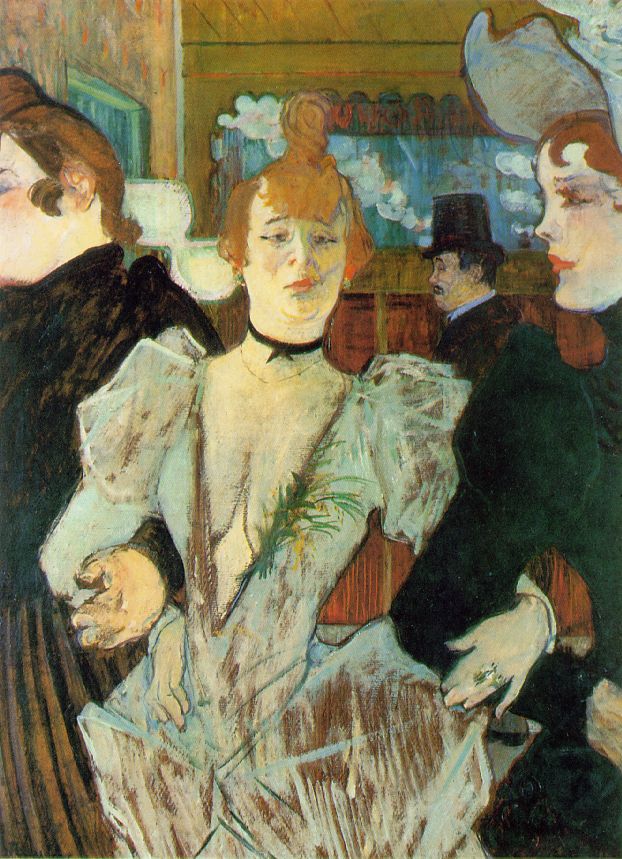La Goulue Arriving at the Moulin Rouge
12:00 AM |
| Henri Toulouse-Lautrec, La Goulue Arriving at the Moulin Rouge, 1892 |
Louise Weber would not have achieved such celebrity without some help from her artistic friends, especially Henri Toulouse-Lautrec. He adopted La Goulue ("the glutton") as his muse, immortalizing her image in paintings that lined gallery walls and posters that littered the streets of Paris, advertising her as the forward dancer with free-flowing skirts. Lautrec glorifies the movement that La Goulue embodies in her dance. This mastery of subject is the product of years spent together, considering he followed the starlet from her debut to the end of her fame. Even when La Goulue isn't dancing in his depictions, Lautrec manages to evoke a sense of lively movement and a certain unrestrained spirit.
Lautrec combines the sense of grand entrance with a spirited personality in La Goulue Arriving at the Moulin Rouge. The lady occupies most of the portrait's space, framed by her gentleman dance partner to the left and her sister to the right. The viewer can admire both her wily red hair and unmissable decolletage from beyond the painting. However, if the viewer dares to stare too long, s/he may encounter the gaze of the subject. Her eyes appear tired, but once combined with the pursed lips, an appearance of a smirk begins to emerge on her famed countenance. In regards to movement, Lautrec achieves a sense of chaos ready for release by painting furiously brushstrokes across the fabric of her dress, criss-crossing every which way. Obviously, La Goulue cannot be contained. Let the entertainment begin.
0 comments